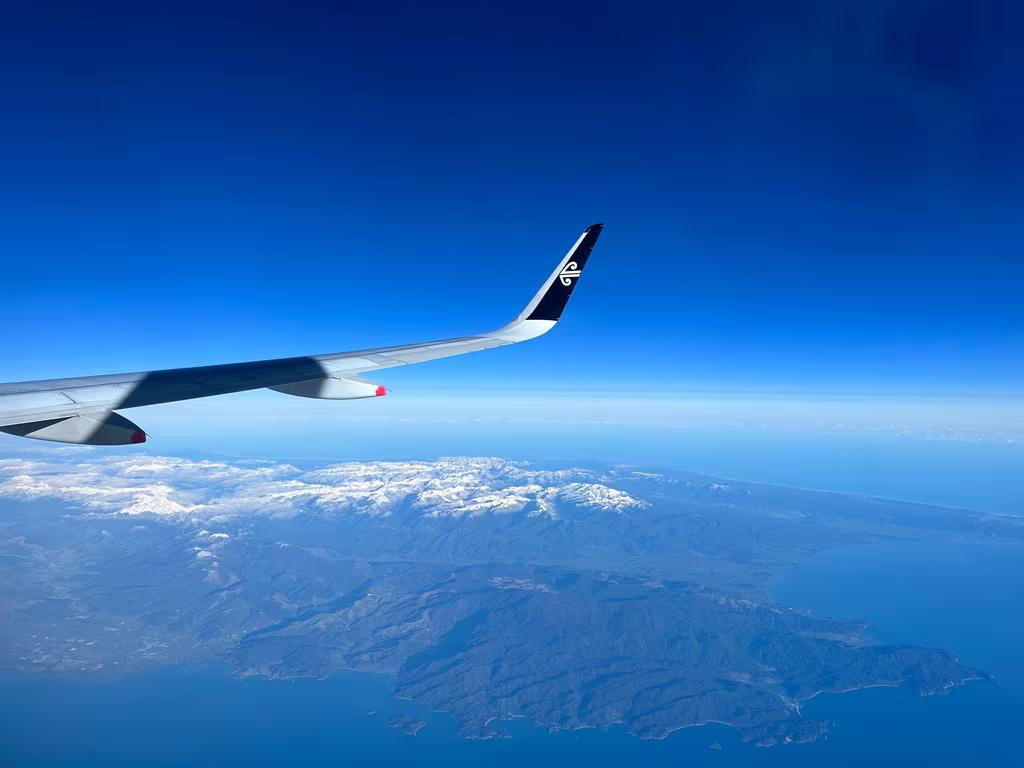
Tracking domestic flight trends
Although the international tourism rebound for New Zealand has been strong, there has been little assessment of how domestic flight activity has been tracking. Despite some challenges, domestic air travel remains stronger than international travel, but is being squeezed by higher inflation, rapidly rising interest rates, plus the ability to travel overseas. This article seeks to profile how domestic air travel in New Zealand has evolved over the last few years.
Domestic travel down around 8.5% from 2019
Overall, domestic air travel hasn’t fully recovered from the pandemic, but it is close.
This strong, but still slightly down, trend for domestic passenger numbers is replicated on the RPK metric, which provides for a distance-weighted assessment of domestic travel. On this metric, the distances flown by domestic flyers are sitting down around 5% in the month of June 2023 compared to pre-pandemic 2019 levels, and down the same over the 12 months overall. As Chart 2 shows, the domestic sectors are among the best performers for Air New Zealand, with the number of travellers to/from the UK and North American ports down the most from 2019 levels.
Travel activity to/from Asia is performing better on long-haul routes, with more RPKs in the June 2023 month than the same month in 2019. Continued additions to flight schedules into Asia have bolstered this stronger result. Overall, short-haul international is performing better again, with data for June 2023 pointing to the amount of flying undertaken on Trans-Tasman and Pacific routes on Air New Zealand being only 6% below pre-pandemic levels.
Despite traveller activity remaining below pre-pandemic level, air travel demand does appear to have recovered faster than air travel supply. Passenger load factors show how full a plane is, and over the 12 months to June 2023, load factors were at 84.7%, compared to 83.8% pre-pandemic across the Air New Zealand group. That 0.9 percentage point difference doesn’t appear huge but is worth 305m RPK – the equivalent of 68,289 additional passenger trips from Wellington to Sydney return, enough to fill just over 319 additional A321neo planes each way. The Trans-Tasman/Pacific routes have had the largest increase in load factors, up 2.9 percentage points, to 85.1%. Domestic passenger load factors are up 1.0 percentage point to 84.9%,
Distilling the regional picture
Not all regional airports publish passenger numbers, but most of the larger airports do. These figures are slightly out of date, being for the period of the 12 months to June 2022 (aside from Gisborne, which is prepared on a March year basis).
Chart 3 shows that the drop in regional and main trunk line domestic air travel had seen domestic passengers into and out of Auckland Airport down 56% below 2019 levels – the worst impact across all recorded airports.
Some airports, like Invercargill, Tauranga, and Hamilton saw more persistent levels of air travel. Meanwhile, other airports like Palmerston North, Napier, and New Plymouth all saw declines of at or near 50%. There are a few reasons that are likely to have combined to produce these outcomes:
- Business travel during the pandemic could be replaced in many regards with online substitutes like Zoom calls, lowering business travel volumes
- But business travel might have been sticker than leisure travel, given leisure travel is generally more price sensitive and less willing to wear travel disruptions and cancellations. Business travel might have fallen, but to a lesser extent than leisure travel.
- Leisure travel appeared to switch from air- to drive-based travel, given the concerns about COVID-19, which will have lowered air travel volumes.
Looking down the list of airports, it’s hard to determine any key drivers or trends. Airports like Tauranga (ex Auckland, Wellington, and Christchurch) appears to be a strong destination still, and distance meant that Hamilton (ex Wellington and Christchurch, but with no Auckland connection) remained strong too.
Palmerston North and Napier are close enough to drive from Wellington, but the strong drops in passenger traffic likely reflects a stronger drop in ex-Auckland travel.
Together, these figures do add weight to the drop in air travel being substituted for drive-based travel, with the Auckland market possibly sticking closer to home.
Flying around is expensive
Input costs for airlines have increased considerably since 2019. International jet fuel prices are up 54% above pre-pandemic levels, according to Infometrics analysis of data from the U.S. Energy Information Administration (EIA).
Data from Stats NZ shows how those trends have played out locally. Compared to pre-pandemic levels, domestic air transport prices are up 64%, and international prices are up 71%.
In the June 2023 quarter, domestic air transport prices were 31% higher than a year ago, and international air transport prices were up 21%pa. However, prices for international travel have fallen in the last two quarters, as more competition appears in the market. Additional input cost pressures for domestic air travel seem to have stopped, with domestic prices plateauing over the last few quarters.
However, prices have increased in last three years by 33%, the same percentage increase that took nearly 10 years to achieve previously! Although cost pressures are set to become less intense, so far there’s little expectation of pricing falling across the board.
Clear-looking air, but always the risk of turbulence
Domestic air travel has been recovering over the last year, and is sitting in a relatively strong position, with a less than 10% reduction in passengers compared to pre-pandemic. But high prices persist, and regional travel has been disrupted.
Recent trends don’t show a deterioration in domestic air travel activity, which is reassuring given the pressure on households and businesses from higher inflation and rising interest rates. But equally, there hasn’t been a notable continuation of recovery in recent months either, suggesting that passenger numbers might be at a near-term equilibrium, relative to pre-pandemic levels. Those factors just mentioned are likely restricting a further recovery.
With an uneasy balance in passenger numbers domestic appearing to settle in, the advice always given on planes seems worthwhile considering: buckle up and keep your seatbelt on throughout the flight, even if the seatbelt sign is off – you never know when the bumps will appear.




















